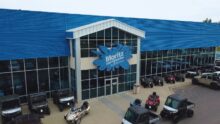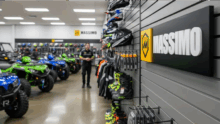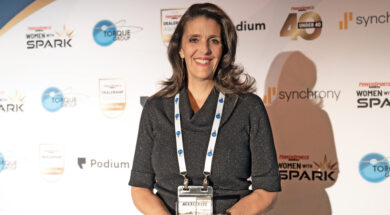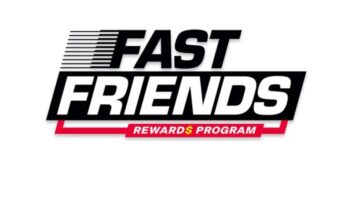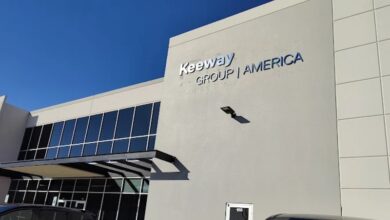Dealership group keeps powersports passion alive in the Southwest
This article originally appeared in the November issue of Powersports Business.
It’s been only 10 years since Tanner Gearn and his brother, Trey, purchased their first dealership, Zia Powersports, but in that short time, the two have been steadily growing their footprint in the Southwest region, establishing a dealership group consisting of four stores across New Mexico and Texas.
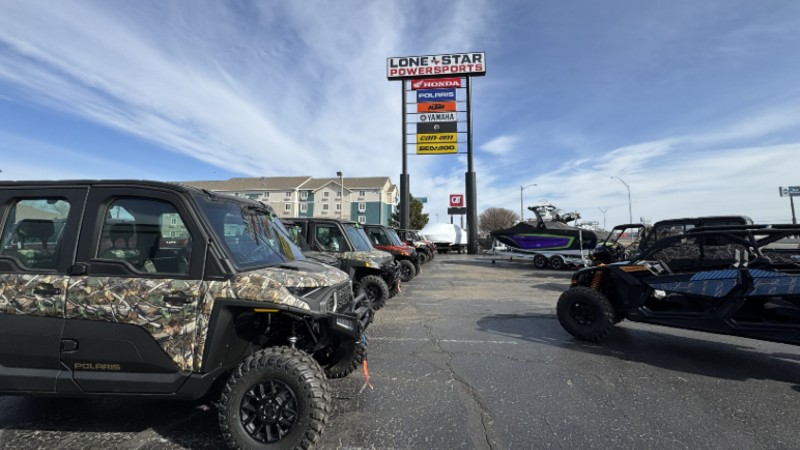
Tanner says his first taste of the business side of powersports was after purchasing used machines to fix up and resell. His first dealership job was as a porter, and he eventually worked his way up to sales and sales management positions by the early 2000s before purchasing his Clovis, New Mexico, location in 2015.
As lifelong powersports enthusiasts, Gearn was drawn to the industry not just as a business opportunity, but to share his love for adrenaline-fueled excitement with his community. However, growing a four-network dealership wasn’t necessarily the game plan; rather something that just happened organically.
“My brother and I didn’t have huge plans for opening multiple stores, but opportunities kept coming,” Gearn says. “About every 24 months, we’d have another opportunity thrown at us, and it made sense to grow, and with that growth, we are having a lot of fun with it — just trying to take advantage of the opportunities that come at us.”
Employees and customers
And the opportunities kept coming. After snapping up a second dealership in Roswell, New Mexico, the brothers went into Texas, establishing Lone Star Powersports stores in Abilene and Amarillo. Now a four-dealership network, Gearn, along with his brother, manage roughly 100 employees across their group. Gearn credits his dealerships’ success to his staff and their commitment to maintaining a focus on customer relationships and excellent service. He says this approach has improved customer feedback and created a welcoming atmosphere.
“You can’t ever stop training. It’s constant, even with veteran guys. It’s a part of the business, sharpening your skills. Over the last 12-24 months, we’ve focused on getting back to the basics, and I feel we’ve done a good job on that, handling the basics and laying a foundation: proper communications, product knowledge, and realizing that customer are in there to give us their hard-earned money.”
Gearn tries to avoid apathy amongst his team by keeping the sales staff just as excited about the machines they’re selling as the customer is. Something he says resonates throughout the showroom floor.
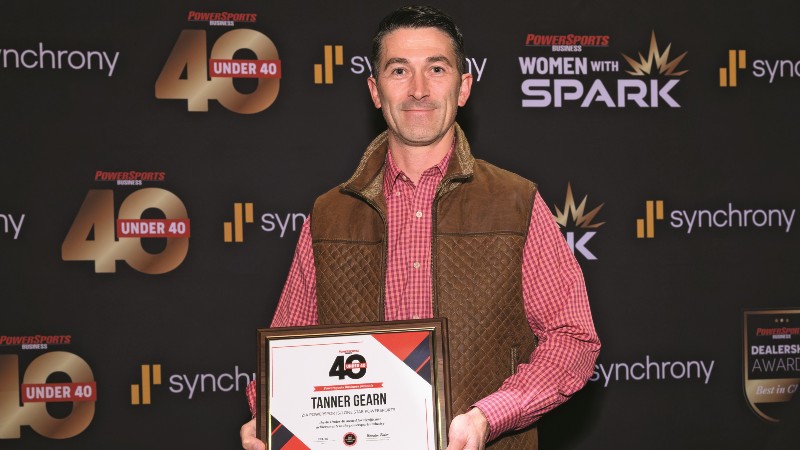
“We see the same machines every day we walk into the dealership. But for the consumer who walks in, they’re seeing some of the coolest stuff you can buy right now. So, with that, as a dealership, we need to maintain that same excitement — and that can easily fade away with your veteran guys or someone on your team who’s not an enthusiast.”
Another challenge Gearn points out is dealing with employee turnover, something that can be commonplace in the powersports industry. It’s also typical for owners and GMs to hire enthusiasts to put on their sales team — a unique element that separates car dealers from powersports dealers. But Gearn says sometimes, out of necessity, he can’t shy away from hiring industry novices.
“We really try to look for people who have that passion, and from there mold them into where they can excel the most. In today’s employment pool, we must give some people opportunities who aren’t enthusiasts but have other skills that we can bring into our culture,” he says. “Turnover is obviously expensive, but I feel the last 18 months have been lower than before. We’re striving to do our best to keep the enthusiasts we do have and offer opportunities for this to be a career and not a job.”
Sales and service
Gearn says his dealerships’ sales strategy is simple: Move the highest volume possible by offering the lowest prices possible. The four stores offer a range of machines, from ATVs and side-by-sides, to on- and off-road motorcycles. Combined, the dealership network carries anywhere from 750-1100 units at a time. Like most dealerships, Gearn admits major unit sales aren’t quite as strong as they were during COVID, but still feels the business is healthy in this current market.
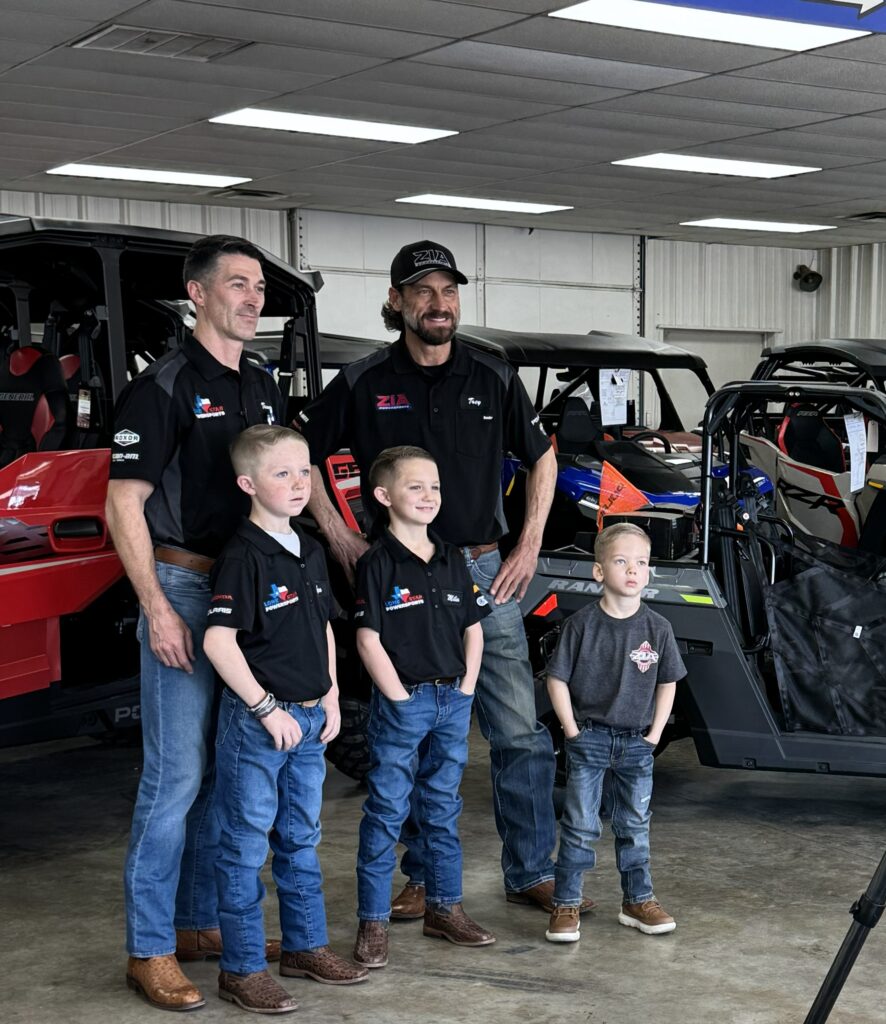
“The pandemic brought us a lot of new customers, and obviously, we can’t keep them all, but we’ve been able to maintain. Some of that growth comes from purchasing other stores, so we’ve been able to grow even post-COVID,” he says. “I don’t have any indicators saying the sky is falling. Overall, we’re not a huge business, but still trying to grow and have a footprint in the industry.”
With major unit sales coming back down-to-earth post-COVID, OEMs can sometimes be a little optimistic in terms of sales forecasts. Gearn says there’s been some erosion to his bottom line due to the current environment, with more supply than demand. And though this has driven margins down slightly, Gearn chalks it up to just being part of the business.
“Some manufacturers are still a little unrealistic in their expectations of what inventory should be. But they play their games and tie it to their metrics, which encourages bad business at times. At the end of the day, we want to be good partners for all our OEMs and hope they look at our dealer network as being an asset, and that’s all we can really hope for.”
To offset some of the inventory issues, Gearn relies on fixed operations like services and P&A to steady the ship. And although departments like services are vital to the operation, they are also significant to the enthusiast. Gearn says a strong service department means maintaining a solid long-term relationship with the customer.
“Services are essential, and we continue to nurture that end of our business. The sales department has its ups and downs, but services and parts are there to keep us afloat. It’s easy to sell these machines, but after the sale is over, services are equally important to the customer as it is to the dealership.”

